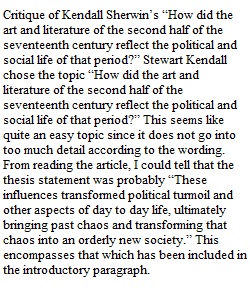


Q The Research Article Project Purpose: The Research Article Project your opportunity to apply independently the investigative, analytical, and interpretive skills practiced in the learning modules. Your successful completion of the project, ideally, leaves you equipped with the skills to investigate questions, evaluate opinions, analyze perspectives, and offer a synthesis, or coherent explanation, of your personal point of view— critical skills in whatever occupation your future holds. The project also allows you to demonstrate your mastery of at least three stated course objectives, the ability to: • Evaluate and interpret primary sources and construct historical insights from them. • Understand, analyze, and evaluate different interpretations of the past. • Express higher-order understandings of the past through coherent, sequential statements based on primary and secondary sources. This project is designed to teach and reinforce the fundamental skills of research, analysis, and exposition. You will work closely with your instructor throughout the semester to complete the individual components that combine to form an excellent final product. Though the project spans the semester, you should not wait to begin any portion: procrastination equals failure. • Pay careful attention to all instructions and be sure to review and consider your instructor’s comments on your work as the project progresses. • Review the research and related links provided below. • Be sure to contact your instructor as soon as possible any time you are unsure of the project requirements or are confused about what’s expected. • See the course schedule [PDF] course schedule [PDF] - Alternative Formats for due dates. • See the Research Article Project Instructions and Checklist Research Article Project Instructions and Checklist - Alternative Formats for overall project instructions. • See the Sample Articles Sample Articles - Alternative Formats to see what a completed submission should look like. • See the Sample Critiques Sample Critiques - Alternative Formats to see what a completed critique should look like. Submit the following items at the appropriate times, according to the course schedule. a. Research Article Project Thesis - 10% of Project Grade. b. Research Article Project Annotated Bibliography - 10% of Project Grade. c. Completed Research Article Project - 60% of Project Grade. d. Critique of one other Research Article Project - 20% of Project Grade. Part 5: Critique of Another Student's Research Article • Overview Overview After several days of reflection, students will offer a critique of a classmate’s research article submission. Critiques are designed to provide experience in identifying the strengths and weaknesses of another’s argument as well as constructive ways in which to offer criticism of someone else’s work. The project instructions provide detail guidelines on how to complete a critique, as well as several sample critiques from which to model submissions. Your critique is worth 20% of your project grade. Critiques may not be revised and resubmitted.
View Related Questions